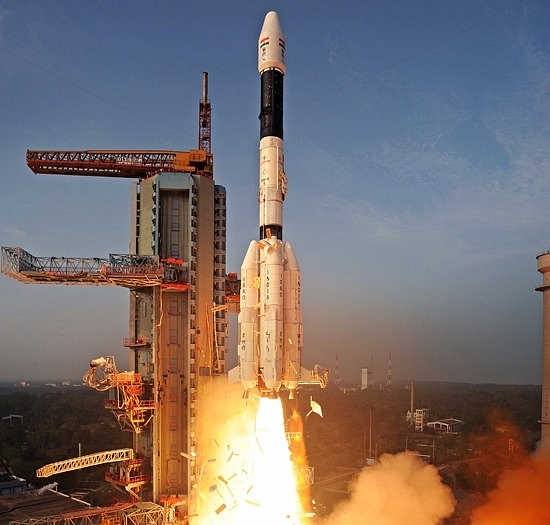Ideas
ISRO’s First Operational Cryogenic Engine Success, Explained In 700 Words
- The entire flight time of GSLV - F05 could be marked out in 16 distinct ‘milestones’ each denoting a specific task or activity that had to happen on the more than 400-tonne heavy rocket.

The GSLV on its way to creating history
September 8 marked a milestone in an arduous two-decade journey of Indian Space Research Organisation (ISRO) when for the first time an indigenous cryogenic engine successfully propelled an operational flight of GSLV (Geosynchronous Satellite Launch Vehicle) into space.
The entire flight time of GSLV - F05, the country’s third exclusive meteorological satellite – a little more than 17 minutes, could be marked out in 16 distinct ‘milestones’ each denoting a specific task or activity that had to happen on the more than 400-tonne heavy rocket.
Each activity had to happen at the exact time programmed earlier and was critical for the next activity to proceed. One failure and the rocket may end up going up in flames.
The tenth milestone though was very important and most anticipated. The large display showing progress of the launch vehicle now listed “CUS IGN AUTH 274.1” - it meant the cryogenic upper stage ignition had been authorised at 274.1 seconds after the launch. Another 20 seconds lapsed waiting for the second stage to separate.
The display board then showed CUS IGN CMDed 295.5 - the command to ignite the cryogenic upper stage engines. In 10 seconds the board had another update: CUS IGN CNF 305.6. The cryogenic upper stage had started firing at 305.6 seconds after launch.
That was when the control room erupted in applause. It had been a difficult journey of more than two decades for ISRO in trying to make a working cryogenic engine. No serious space player leaves this one stone unturned. You got to be able to master cryogenic technology to earn your passport to space. In ISRO’s own words:
Only five nations have mastered the ability to pull off all this on a rocket travelling at more than 5km per second. It had taken quite a few attempts for ISRO to get this right. Technology embargoes were also added to the list of challenges they had to overcome. Russia, which had promised assistance, was forced to go back on its word by the US. It stopped with supplying six Russian made cryogenic engines. From then on ISRO had to go on its own in developing a cryogenic engine of its own.
After a burn time of slightly more than 700 seconds the cryogenic engine shut off as planned. The payload was delivered in the planned orbit after a few more seconds and the mission could now be called a complete success.
Introducing ElectionsHQ + 50 Ground Reports Project
The 2024 elections might seem easy to guess, but there are some important questions that shouldn't be missed.
Do freebies still sway voters? Do people prioritise infrastructure when voting? How will Punjab vote?
The answers to these questions provide great insights into where we, as a country, are headed in the years to come.
Swarajya is starting a project with an aim to do 50 solid ground stories and a smart commentary service on WhatsApp, a one-of-a-kind. We'd love your support during this election season.
Click below to contribute.
Latest